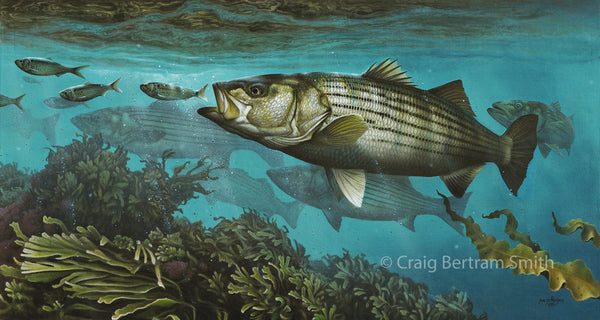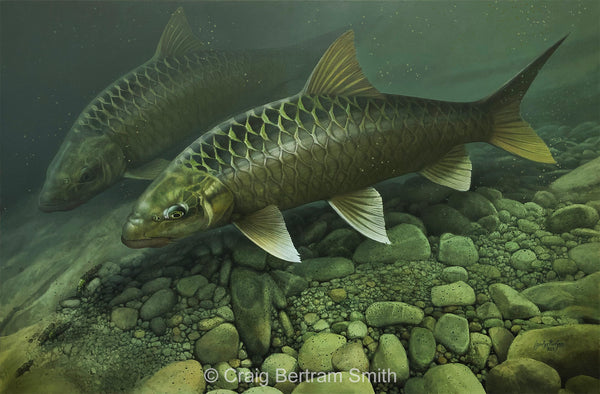
Yellowfin Torpedo
SOLD (91cm x 61cm (36" x 24") Oil on canvas)
© Craig Bertram Smith
Please contact craig@wildlifeartist.co.za for enquiries or if you would like to get a commission painted.
The Tuna species and in this instance, the Yellowfin Tuna, have always been top of my list of fish to paint, they are fascinating and captivating creatures. They are a marvel of the seas. In every way, they are perfectly adapted to a high paced existence of an ever changing life in the deep blue open ocean.
For a fish to be able to survive in the open ocean there are many restrictions and natural elements that they have to overcome. Tuna are so precisely suited to dealing with these elements, as you can see with its torpedo shaped body, allowing the fish to move through the water with effortless grace and power. To add to it’s design the surface of the body has adapted with many thousands of tiny scales, slots in the skin where the fins would fit into during a high speed chase and eyes that have a membrane of skin over them so that they fit flush with the surface of the skin like that of a jet airplane, ship or submarine where the screws and rivets would be countersunk to sit flush with the metal surface.
The biggest attribute behind it’s matchless power and endurance is indicated by it’s dense muscle configuration, a rich blood red muscle mass filled with a maze of blood capillaries to feed the muscled with oxygen. This meat is highly sought after with prices for a single fish fetching up to $10 000 or more.
There are two distinctive muscle groups: The outer core of muscle is used for great bursts of speed for shorter distances probably when pouncing for bait fish, and the inner muscle core (a darker coloured muscle) for long distance endurance swimming, during it’s continual migrations in search of fresh feeding or breeding grounds. More incredible though is that the central muscle core is kept at a higher temperature, generating it’s own body heat, making it partially “warm blooded”




